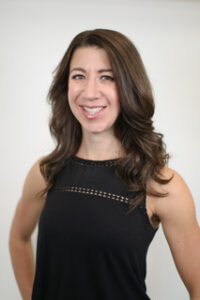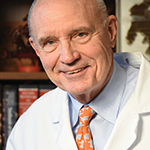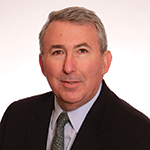
A choice to change from traditional rheumatology to a path less traveled
Work hard > Medical school > Work hard > Residency > Work hard > Fellowship > Academics or private practice > Work.
Most of us take this path as physicians. It’s the path presented to us as medical students, and it’s the path our mentors took. It’s the path I took, too—until I didn’t.
Residency
I was your typical type A, overachieving medical student. I studied hard, I worked hard, and I matched into the Osler Medical Residency Training Program at the Johns Hopkins University School of Medicine, Baltimore.
I chose Hopkins for its “work hard, play hard” reputation. I had three years to learn how to take care of human beings, and I wanted to learn how to care for patients as best I could—call schedules be d***ed. Deep in the Hopkins trenches, I slept little, worked a ton and made the best friends of my life.
A co-resident of mine, now an interventional cardiologist at the University of Michigan, says it best, “Osler residency is the best thing I ever did that I would never, ever do again.”
As residents, we were required to spend two weeks on the rheumatology service during our intern year, which I was not looking forward to. I didn’t understand rheumatology labs, I certainly did not understand rheumatologic diseases, and I did not like that—or so I thought.
At Hopkins, the inpatient rheumatology service essentially functioned as the diagnostic medicine service. In other words, if a patient had been admitted for weeks and multiple specialists had not figured out what was wrong, they called rheumatology.
When on the rheumatology service, I would get home late and call my long-distance boyfriend to complain.
“The chart is 15 years long. I’ve read everything in it. I’ve been up since 2 a.m. scouring the literature, and I still can’t figure out what’s wrong with this guy. I hate this,” I said.
He laughed and replied, “I think you’re going to become a rheumatologist.”
“Were you even listening to me? I said that I hate this,” I retorted.
“No, you need this,” he said. “You need something to obsess about. You need something that you don’t understand. Otherwise, you’ll just get bored and watch Netflix.”
He wasn’t wrong.
Fellowship
I had the privilege of staying at Hopkins for my rheumatology fellowship. Patients with common and rare rheumatic diseases flew in from all over the world to get care from an expert—and awesome—faculty. It was a veritable Candyland for a rheumatology fellow.
As fellows, we learned a lot, but two tenets from my fellowship director and a former physician editor of The Rheumatologist, Philip Seo, MD, stand out:
- Rheumatology is advanced internal medicine. To be a good rheumatologist, you must be a good internist. It is far more helpful to tell a consulting physician that “it’s not a rheumatic disease, and here is how I would think about this complicated patient next,” than “it’s not rheumatic disease, thanks”; and
- Words matter. The language you use in the medical chart can and will follow a patient around for the rest of their lives. And the words you use when speaking to a patient can either inspire trust and hope or mistrust and despair. Choose carefully.
Academic Rheumatology
As my fellowship came to a close, I knew I wanted to stay in academics because I loved to teach, and I loved taking on and managing the toughest cases. I learned that the University of Texas at Austin had recently opened a new medical school that didn’t have a rheumatology division yet. So I emailed its chair of internal medicine.
“Hi, I’m Sam,” I wrote. “I’m finishing my training at Hopkins and want to teach and see patients. Do you want a rheumatologist?”
Within minutes, the chair replied with a “yes, call me,” and a few interviews later I was hired.
In 2018, I moved to Austin—knowing only one person in the city—to build a division of rheumatology at Dell Medical School. The waitlist to see me when I arrived was 1,245 patients long. I built a rheumatology clinic in a federally qualified health center. I built a rheumatology clinic in an orthopedic clinic. I built an academic inpatient rheumatology consult service. I also created an elective for medical students and residents and lectured the first-year medical students on clinical rheumatology.
By 2021, I was gearing up to build a rheumatology fellowship program, as well—and then I burned out. I was a shell of myself. I felt anxious all the time. I could not sleep. I was seeing a therapist. When my requests to negotiate my workload were met with “take it or leave it,” I resigned without a backup plan.
I jumped without a parachute, and it was the best thing I ever did.
Editor’s note: Read how Dr. Shapiro reimagined her career in part 2 of “Doctoring Differently.”

Samantha C. Shapiro, MD, is a clinician educator who is passionate about the care and education of rheumatology patients. She writes for both medical and lay audiences and practices telerheumatology.



